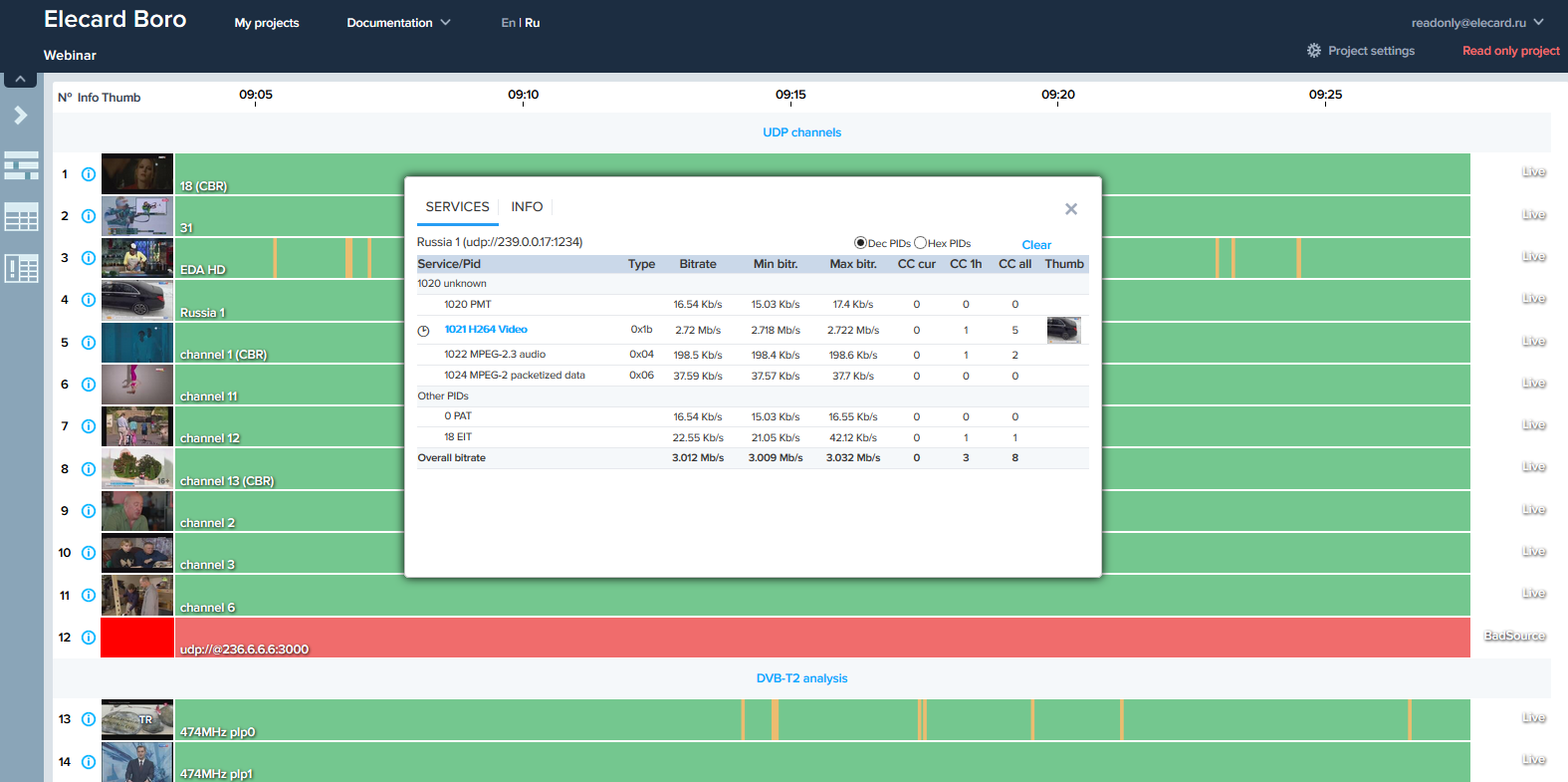Elecard Boro
TV market has become overloaded with a variety of solutions aimed at content creation and delivery. This tendency prompts companies to switch their focus to the quality of the provided services. To win the ever-increasing competition in IT industry one should provide extra reliable services and quickly respond to the occurring problems before they become evident for users. At this point you may hit a stumbling block - a price for a monitoring solution. The fact is that the overwhelming majority of monitoring solutions will cost you just a little bit cheaper when compared to the transcoding solutions.
In this context Elecard Boro seems to offer more extensive benefits when it comes to price and fast launch of the monitoring system. Boro service enables a huge company or a single user to quickly start analyzing the desired number of the streams. Being a cloud service, Boro makes it a way easier to launch a monitoring system and reduces the amount of time required to analyze the first stream to 1-5 minutes. Three easy steps will activate your monitoring system – just register, download and start a probe (a console application). A personal account at Boro service is used to manage and control your monitoring system via a web-interface. A registered user may analyze up to 10 streams during 7 days. However, it is possible to extent the number of the tested channels up to 50 and increase the testing period up to a month.
The service offers an opportunity to monitor IPTV and OTT services by collecting statistics and values of the analyzed parameters similar to the majority of existing solutions.

The functional capabilities of Boro might be extended by using DVB-to-IP gateway (for example, based on ProgDVB http://www.progdvb.com/media_cs.html ) with further analysis of TS quality provided in IP format.
Boro is available as a stand-alone software solution in case a cloud solution is not a suitable option for your project.
Monitored parameters:
- QOS
- Signal Loss / Bad Source
- Download/Multicast/PID bitrates
- Continuity Counter / MLR
- Ethernet Descriptors (TOS, TTL Src, Dst, Mapping)
- Inter-Packet Arrival Time (IAT)
- Multiple Broadcasting Sources
- Stream Encryption
- Audio and Video Headers
- ETSI TR 101 290 (priority 1, 2, 3)
- In-depth HLS Analysis (more than 25 parameters and triggers)
- Service Availability
- OTT: time to first byte (TTFB) and source IP registration
- QOE
- Video Freeze
- Timestamps Discontinuity
- SCTE-35 Extraction
- Thumbnails capture by events and time interval
- Audio and Video Decodability
- Estimated PSNR
- Audio Track Missing
- Audio Silence Error
- EBU R 128
- Video Recording by Event
- IDR Alignment
- Closed Captions Extraction
Read more about using Elecard Boro for different projects:
- Monitoring of MPEG TS and tracking of SCTE-35 markers in OTT versions of television channels.
- Monitoring of hockey games live streaming. Canadian Hockey League: Real-time monitoring of HLS and MPEG-DASH streams from several venues at the same time to ensure high quality of live streaming to CHL TV website and Apple TV, Amazon Fire, Roku apps.
- Distributed monitoring and quality control system for 100 HLS streams. Installation of Elecard Boro probes at the headend station and across content distribution network for monitoring of 100 HLS streams.
- Real-time monitoring of DVB feeds. Real-time monitoring of DVB feeds at the origination and reception points to ensure high quality and availability of the delivered streams at remote receiving servers.
- Monitoring of the television system in shift camp. Continuous monitoring of the TV network of the shift camp for quality control of TV programs received by the head-end station from the satellite, transmission via radio relay and optical network, as well as for selective control of Smart TV connection ports.
